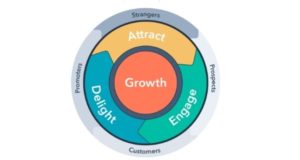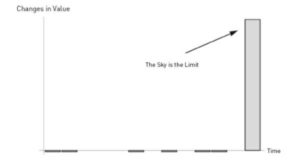The Method Episode #10

Using The Scientific Method To Win In Business
Business is a lattice-work of experiments.
For the most part, we know what we want to achieve, but how is never obvious. We only discover how by running countless micro-experiments until the way presents itself.
Kind of like this.

So an important skill to keep in your tool kit is the art of experimentation. If you know how to run falsifiable tests, i.e., you can prove whether your assertions are true or false. You can find your path.
Too often, many of us get stuck deliberating and debating ideas. Instead, we should test them.
Here’s how it works.
1. State your goal or prediction
2. Define your actions
3. Track results
Setting A Goal
First, state what you want to achieve or what you think will happen.
To make your goal or prediction falsifiable, it needs to be measurable with a deadline.
Like: I want to increase our leads per month to 30 by the end of June.
Or: I believe Facebook ads will be more successful than Instagram ads. The winner will be the campaign that generates the most leads by February.
Define Your Actions
Now outline what actions you will take and what limitations you will use.
Example: I will run three keyword campaigns on google ads with a monthly budget of $500 for each keyword, and I will not edit the ads once the campaigns are live.
Or: We will run a two-month campaign on both Facebook and Instagram with a budget of $1,000 for each campaign.
Track Your Results
Now start your experiment and use google sheet to track your results.
When running split tests (settling debates). I like to see a meaningful difference in outcomes to choose a winner—a minimum of 10% for me.
When shooting for goals (finding new ways to succeed), I like to see a meaningful lift in results. For me, this is 25%+.
I frequently miss my goals and lose debates. That’s why testing instead of planning, discussing or debating wins.
When I miss, I learn. When I’m wrong, the business still wins.
Often I miss my intended goal but do see a meaningful increase in results. Shoot for the stars and land on the moon.
Recommended Don’ts
• Don’t run experiments that take more than ~$1,000 or ~3 months to complete
• Don’t run experiments that can cause a significantly negative outcome
• Don’t run more than a few experiments at the same time.

The Flywheel
Picture a huge, heavy flywheel—a massive metal disk mounted horizontally on an axle, about 30 feet in diameter, 2 feet thick, and weighing 5,000 pounds.
Imagine that your task is to get the flywheel rotating on the axle as fast and long as possible. Pushing with great effort, you get the flywheel to inch forward, moving almost imperceptibly at first. You keep pushing and, after two or three hours of persistent effort, you get the flywheel to complete one entire turn. You keep pushing, and the flywheel begins to move a bit faster, and with continued great effort, you move it around a second rotation. You keep pushing in a consistent direction. Three turns … four … five … six … the flywheel builds up speed … seven … eight … you keep pushing … nine … ten … it builds momentum … eleven … twelve … moving faster with each turn … twenty … thirty … fifty … a hundred.
Then, at some point—breakthrough!
The momentum of the thing kicks in in your favor, hurling the flywheel forward, turn after turn … whoosh! … its own heavyweight working for you. You’re pushing no harder than during the first rotation, but the flywheel goes faster and faster. Each turn of the flywheel builds upon work done earlier, compounding your investment of effort. A thousand times faster, then ten thousand, then a hundred thousand. The huge heavy disk flies forward, with almost unstoppable momentum.
What Jim Collins is describing here is how businesses build momentum and grow. A successful business can put $1 into their flywheel and get more than a dollar back out.
If you can find your flywheel, you’ve found your winning formula.
The formula is simple. You need to acquire customers for less than their lifetime value and then ask those customers to refer you more.
Say you acquire a customer for $100, and over the lifetime of doing business with that person, they bring you net (you need to account for costs of serving that customer) $1,000. And you do a great job of looking after them, so they refer you to one of their friends, who also brings a net $1,000 to your business.
You’ve invested $100 and generated a 20x ROI of $2,000. Now you can spin the flywheel faster by taking the $2,000 and acquiring 20 more customers, which will bring another $40,000 to your business and so on. That’s a winning formula. That’s how the flywheel works.
Most businesses don’t know what their flywheel is, and very few build a predictably profitable one.
Keep this in mind when you want to grow.
“The people who don’t like your work don’t count. There is no such thing as the opposite of buying your book.”
~ Nassim Taleb

Benefiting From Chaos
Last week we talked about preparing your business for hard times by increasing robustness.
Well, there’s a way you can benefit from hard times too. Excuse the cliche but not just survive, thrive.
Say hard times is chaos, and chaos is just randomness, external variables that affect you which you can’t predict or control.
You can benefit from this randomness by making small bets with large payoffs. Otherwise known as options.
Insurance is an option. When chaos occurs like an accident, your medical bills are taken care of for a small cost.
During the lockdowns, I saw many businesses create an online offering like an e-commerce store or an info product. They prospered while many of us had zero income and relied on government help.
So the goal here is to increase your optionality. Meaning in the face of any set of circumstances, you have more than one and hopefully many paths you can take—each with significant upside for a minimal upfront cost.
Setting up an ecom store on Shopify costs very little and provides huge upside when faced with a pandemic.
Practically speaking, increasing your optionality then might look like.
• Giving yourself access more to sales channels
• Hiring contractors instead of employees
• Creating digital versions of your product
• Contracting multiple suppliers
• Finding ways to repurpose resources
Create options for yourself that require little investment upfront but offer asymmetric payoffs when you need to change course.

